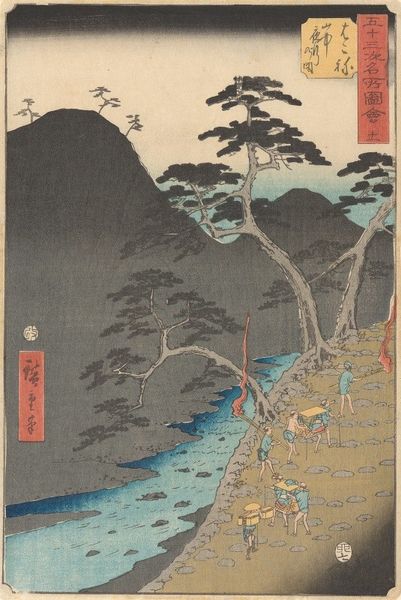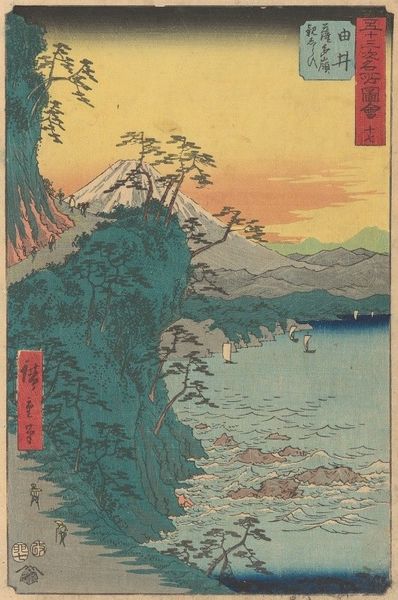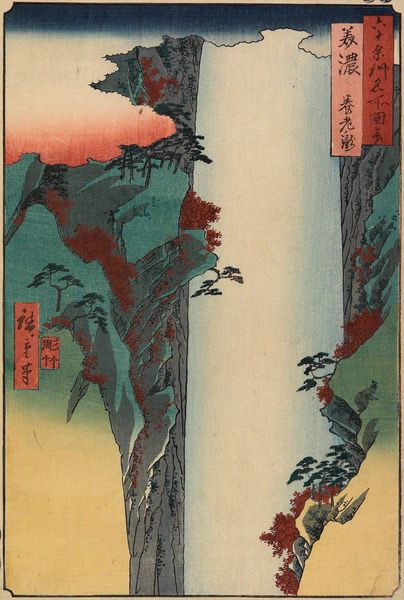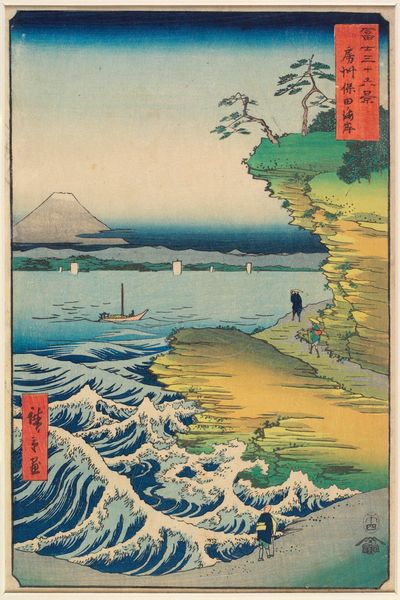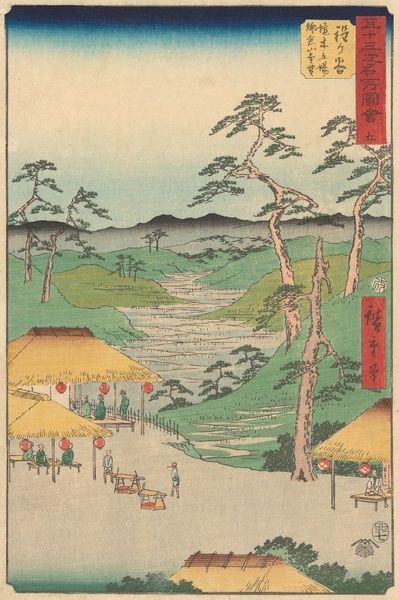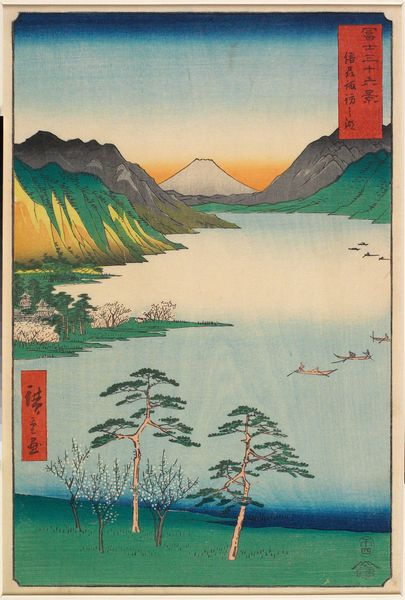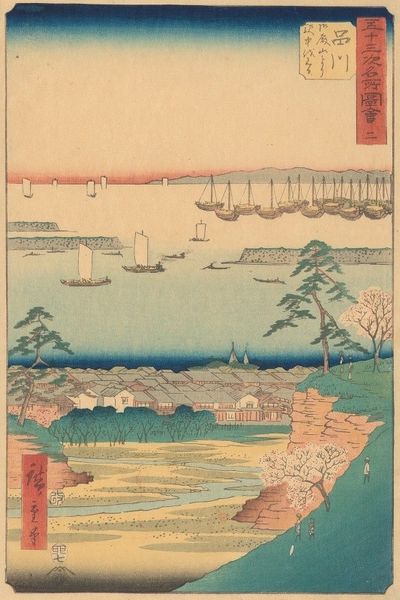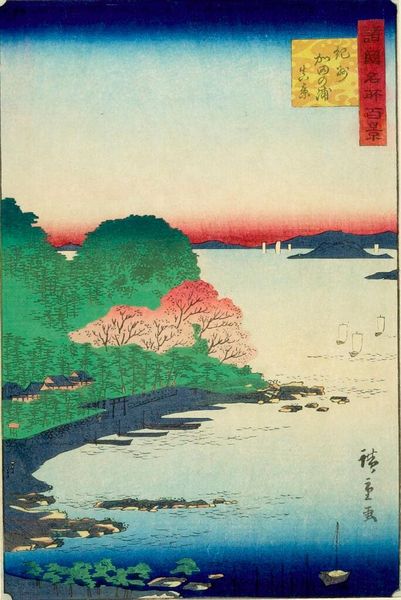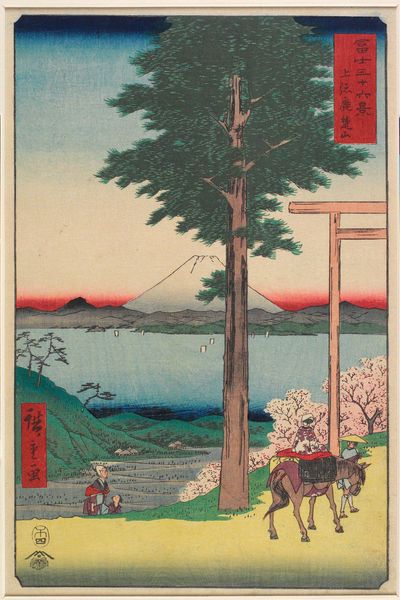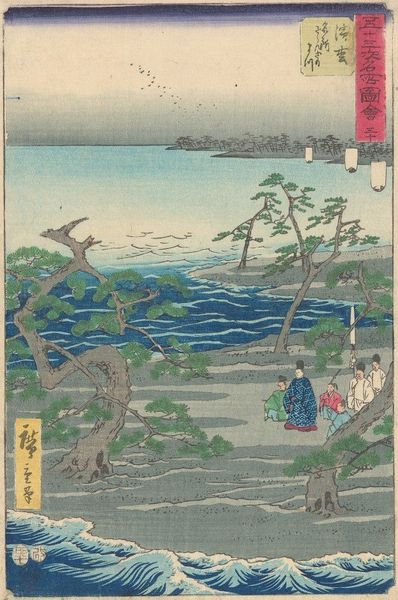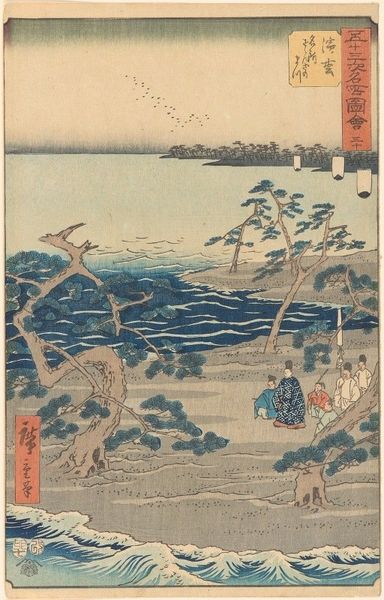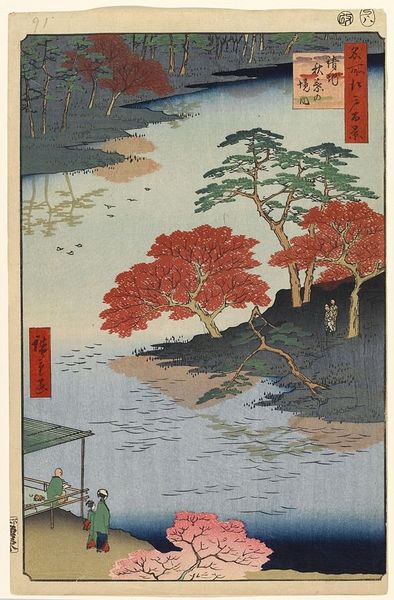
print, woodblock-print
# print
#
asian-art
#
landscape
#
ukiyo-e
#
woodblock-print
#
genre-painting
Copyright: Public Domain: Artvee
Curator: Oh, this print! It immediately strikes me with its tranquil serenity, doesn't it? The gentle curve of the road and the soft blues of the water exude a quiet, almost meditative calm. Editor: It's beautiful indeed. What we have here is Utagawa Hiroshige’s "Shirasuka," a woodblock print from 1855. It's part of the series "Fifty-three Stations of the Tōkaidō," offering scenes from the well-known route connecting Edo and Kyoto. Curator: Tōkaidō…that’s so rich with history and mythology. These landscapes of journeys hold such power. It feels like every detail in the landscape symbolizes progress, and the potential obstacles on life’s path. Editor: Note how Hiroshige uses varying perspectives. We see a high vantage point for the overall landscape, but then our eye is drawn down the road following the travelers as if we're alongside them. The color blocking is interesting, too; the flatness emphasizes the two-dimensional quality of the print. Curator: I'm also captivated by the symbolism inherent in Japanese prints of this era. The travelers ascending the path—each burden so meticulously rendered. They evoke a timeless narrative about perseverance, the daily journey as both literal and spiritual. This route held religious significance, as journeys often do. Editor: Symbolism aside, look at how effectively the diagonal of the road creates spatial depth, contrasted with the flat expanse of the sea. The graded shades of blue in the water meet the soft-toned sky to make this more than just a record of the location. It becomes a study of tonal relations. Curator: True, the use of color enhances the spiritual feeling of reverence that is apparent, evoking both earthly experience and perhaps a transcendent element to all travel. It invites us to reflect on our connection to movement, place, and time. Editor: It’s fascinating how Hiroshige balanced naturalism with stylistic conventions. He captures the light and atmosphere of a coastal scene, yet renders it with clean, simplified forms that are so characteristic of Ukiyo-e prints. This balance between reality and representation really anchors my perspective here. Curator: This careful balancing act is what creates the emotional power in the image. As we pause to reflect on these visual symbols of our past and our present journey, they bring fresh insights into timeless challenges that unite us. Editor: Yes. Analyzing these compositional elements, and acknowledging the symbolism involved, helps us unpack why "Shirasuka" has had such an enduring appeal for us here today.
Comments
No comments
Be the first to comment and join the conversation on the ultimate creative platform.
